10 September 2013
7 September 2013
One of the last days of summer
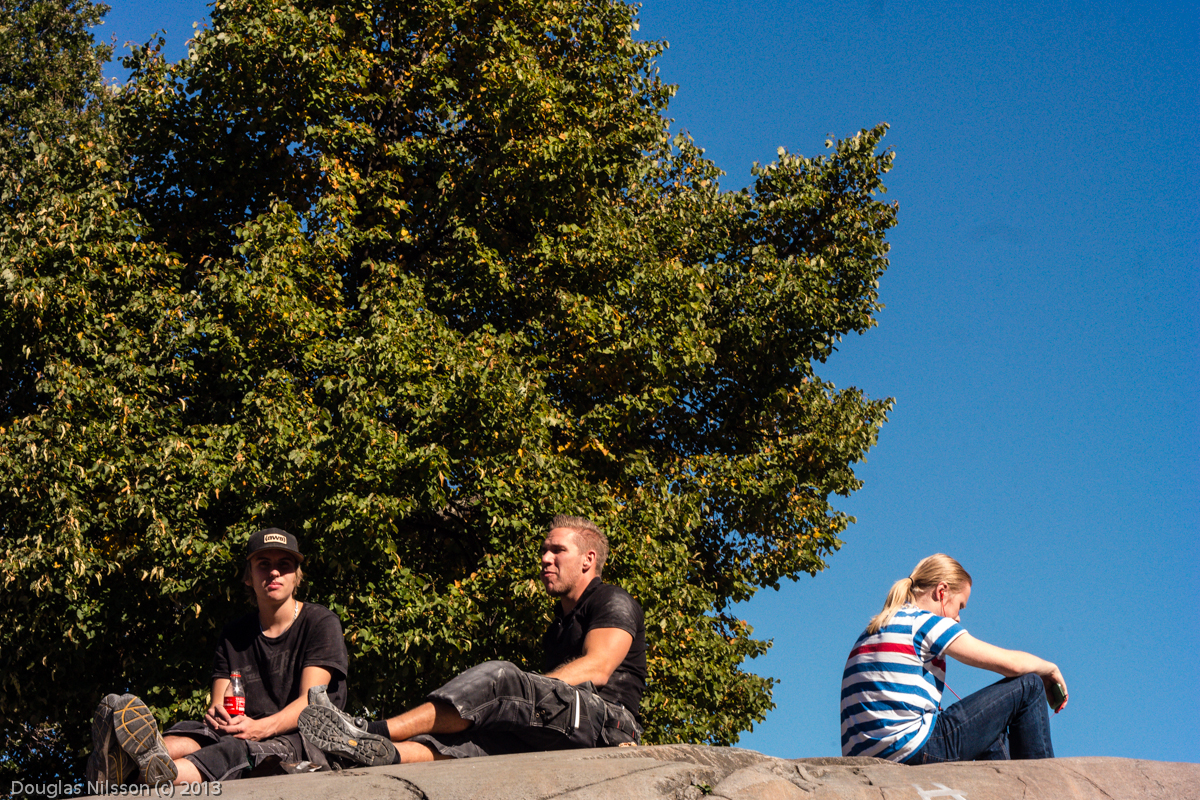 | |
| The Pentacon 50mm again. I don't think the guys were students at all, but doing some construction work on the Campus, and they just found a perfect spot for a break. |
 |
| And outside the subway-station, Harry Hole was waiting for someone. Watching for some Norwegian criminals? At least this is how I have always imagined him. |
15 August 2013
B.I.F. - Bug In Flight
12 August 2013
10 August 2013
If you were a 2 mm bug
26 June 2013
The hare and the sea (Haren och Havet)
 |
| The hare looked at the sea: that blue flat is so large, I can not eat it, I can not drink it, I can not run on it. What is it for? |
3 June 2013
KONICA HEXANON 85mm f1.8 ON THE SAMSUNG
With the crop factor this is more like carrying a 135mm lens, so it is a little bit long for portrait, but can be used as such, and for street shooting this is a great focal length. None of these shots are wide open however, I will have to come back to that.
 |
| Early morning in the University city of Lund, Sweden. |
 |
| A man and his pipe... |
2 June 2013
Konica Hexanon AR 24mm f2.8 on the Samsung NX20
Not surprisingly this turned out to be the most easily used street lens, as it corresponds to about 35mm focal length on a 24x36mm film camera, and comes with a deep depth of focus. I mostly put it to f8 or f11 and set the focus distance to 2m and everything between 1m and infinity should be sharp. Having read the camera manual on the train and discovered that I should be able to shoot in aperture priority, the combination now turned out to be a good snap-shooting camera. Of course, this isn't real "aperture priority", since I'm meeting closed down, but on the other hand, the electronic view finder does not go dark as the optical viewfinder does in a similar situation (like when shooting with m42 lenses on a Pentax DSLR). That is one point to the EVIL Samsung relative to the DSLR Pentaxes (or any DSLR actually). Here are now some examples from central Lund (old University city in southern Sweden):
 |
| "I should have brought the manual!" |
31 May 2013
Low light/high ISO performance of the Samsung NX20
As mentioned, I've realized quite soon that I had got spoiled by shooting with the Pentax K-5. Samsung NX is very far from the K-5 standard at high ISO. Now, the Samsing NX20 of course has a Samsung sensor. One that is presumably related to the Samsung sensor in the Pentax K20D and the Pentax K-7. Not exactly the same, but certainly related, perhaps like a niece or so ;)
People has claimed that they continued to improve the video functions since the K-7. I haven't tried that yet. I was hoping that they had also tweaked and improved other properties of the sensor. But my impression is that the K-7 does better, though I need to make a side by side comparison on the same motif, in the same light. It comes down to the nature of the noise. There is something with the NX20 noise at high ISO that I don't like!
People has claimed that they continued to improve the video functions since the K-7. I haven't tried that yet. I was hoping that they had also tweaked and improved other properties of the sensor. But my impression is that the K-7 does better, though I need to make a side by side comparison on the same motif, in the same light. It comes down to the nature of the noise. There is something with the NX20 noise at high ISO that I don't like!
 |
| Crop showing noise at ISO 6400 from the following photo. |
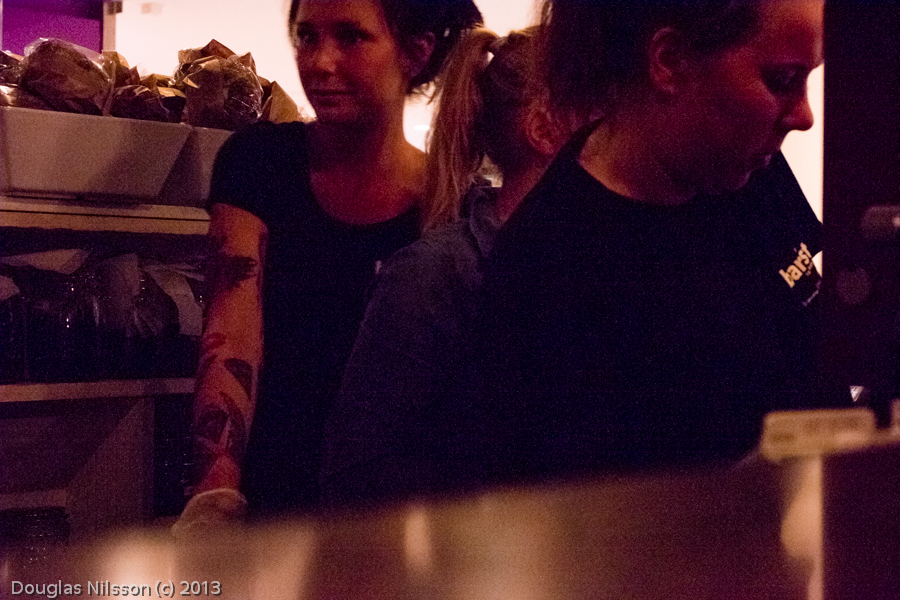 | |||||
| Baristas at Stockholm Central Railwaystation. Uggly noise and even some banding :( |
Konica Hexanon AR 40mm f1.8 on the Samsung NX20
Here are a few examples of the Konica Hexanon AR 40mm f1.8 "pancake" on the Samsung NX20. Even though it isn't really "pancake" with the adapter included, it is by far the most compact combination you get from a Konica AR+adapter. On an APS-C sensor this is a somewhat narrow angled normal lens. That means that it is still fully do-able to shoot with it from the hip. This is a nice street combination.
This lens has got a bit of cult-status among EVIL people, in particular among 4/3rd shooters, for whom it offers an ideal portrait focal length at f1.8. It is probably because its own compact size and the short registration distance of the Konica AR system (which keep down the size of the adapters) and the resulting combined compact size, and a fairly good optical performance. I remember it was a tad soft at f1.8 (but still sharper than the SMC Pentax-M 40mm f2.8 pancake at f2.8) on film. I will test it wide open on digital later on. Anyway, its popularity among EVIL photographers has done strange things with the price. Before the mirrorless sytem cameras came, this lens could not be used on any digital camera, and hence you could buy them for 5 Euros (as they were sold as the default standard lens for several years it was made in large numbers). Now people pay up to 50 Euros. Had I known I would have bought everyone I could get hold of for 5 Euros, and now sold them for 50. Certainly would beet the stock exchange market!
This lens has got a bit of cult-status among EVIL people, in particular among 4/3rd shooters, for whom it offers an ideal portrait focal length at f1.8. It is probably because its own compact size and the short registration distance of the Konica AR system (which keep down the size of the adapters) and the resulting combined compact size, and a fairly good optical performance. I remember it was a tad soft at f1.8 (but still sharper than the SMC Pentax-M 40mm f2.8 pancake at f2.8) on film. I will test it wide open on digital later on. Anyway, its popularity among EVIL photographers has done strange things with the price. Before the mirrorless sytem cameras came, this lens could not be used on any digital camera, and hence you could buy them for 5 Euros (as they were sold as the default standard lens for several years it was made in large numbers). Now people pay up to 50 Euros. Had I known I would have bought everyone I could get hold of for 5 Euros, and now sold them for 50. Certainly would beet the stock exchange market!
 |
| She had a very nicely articulated "hand-language". |
 |
| Mmh, is that my train? |
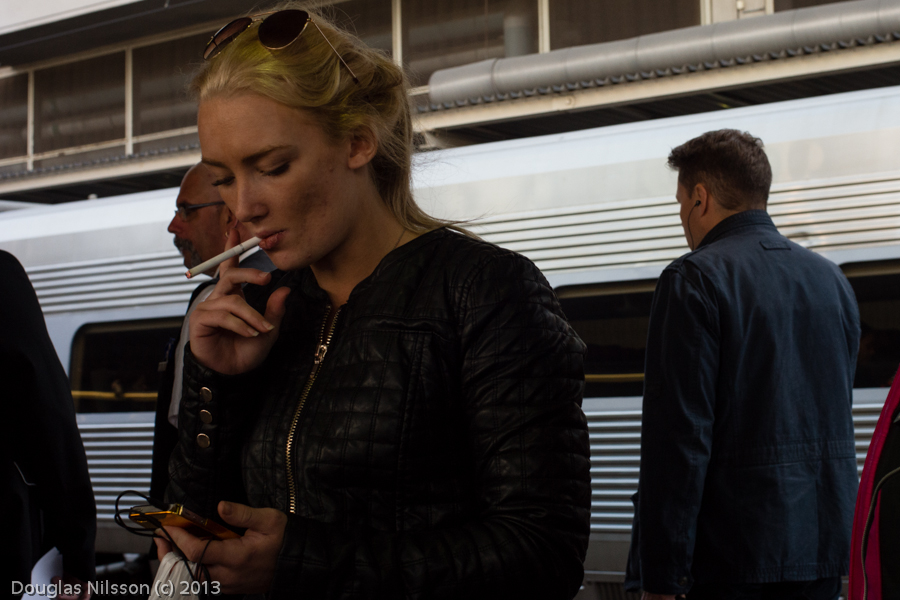 | |
| A smoke and facebook, what more can you want? Why is it that smoking looks so much better on photo than in reality. And it doesn't smell on photo as well! |
 |
| A group of Chinese business gentlemen (?) were heading the other direction. Several Nikon cameras in that group. |
30 May 2013
Heavy glass!
Konica Hexanon AR 57mm f1.2, 7:6, 460g.
At least it looks impressive on an NX. A bit front heavy. It will be interesting to see how it render.
From first shots today, it is clear that in low light, the Pentax K-5 have really spoiled me. The NX-20 isn't at all up to the low light quality of the K-5.
At least it looks impressive on an NX. A bit front heavy. It will be interesting to see how it render.
From first shots today, it is clear that in low light, the Pentax K-5 have really spoiled me. The NX-20 isn't at all up to the low light quality of the K-5.
My new Digital Konica camera!
For the first time since 1983 I am traveling without a Pentax camera.It is somewhat scary. Instead I have the Samsung NX20 EVIL with a Konica AR adapter from FOTGA and a bunch of Konica Hexanon AR lenses.
In honor of Konica, my first SLR system 1980-1983, I've searched my cabinets for an old Konica labelled shoulder strap. On the camera in this humble phone-shot, you find the Hexanon AR 40mm f1.8 pancake. With me in the bag is also the
Hexanon AR 24mm f2.8
Hexanon AR 57mm f1.2
Hexanon AR 85mm f1.8
Macro-Hexanon AR 105mm f4 with the autohelicoid
And I almost forgot...I also have one Samsung "pancake-zoom" 20-50mm with me. If I crawe autofocus at some point.
There is a lot I cannot say yet about this camera until I have worked with the images it deliver. But one annoying thing must be reported.
When the NX-AR adapter arrived yesterday and I mounted it on the camera (with a lens), the camera insisted with sending error-messages such as "no lens" and "lens detached" and refused to shoot. I've seen that some adapter manufacturers list one earlier Samsung model as having this problem, but I don't remember which one. The NX20 appeared to be too new, it wasn't listed as a problem, but usually not as an confirmed option either.
After some experimenting I discovered that the mount includes a pin that are pressed into the camera body when a lens is mounted, but for some reason, the original Samsung lens trigger this, but the adapter doesn't, despite that I cannot see any difference in size of the teeth of the adapter v.s. original lens mount. The original lens has a plastic mount, but the adapter is metal, so first hypothesis was that the mount didn't work if it was conductive, but after some experimenting, with metal and non-metal tools, it turns out to be wrong. What is this!
It took me about 20 minutes to take apart the camera and discover a way to get around this. The female lens mount is easily removed with a screwdriver. Four screws. Behind the metal ring, a plastic ring and a second metal ring. Removing all three (carefully noting their position), I could remove the critical metal pin. There is a small spring around the pin. After some experimenting it turns out that deep inside the whole where the pin resides, there is some sort of sensor that detect if a lens mount is pressing the pin into the body or not. I took a bit of metal foil (it did not have to bee conductive, but metal foil is easy to shape), formed a cylinder of about 1mm diameter, 2-3mm length, and then jammed the foil into the whole, pushing, pushing, and then inserting the metal pin and spring, replacing the mount rings and screws...
And it works! Now the camera is always convinced that there is a lens in the camera mount. And it doesn't interfere with any other functions.
What I wonder most is why Samsung has included this idiotic pin? The only explanation I can see is if they are actually trying to make it difficult to their customers to mount and use adapters and old lenses...
In honor of Konica, my first SLR system 1980-1983, I've searched my cabinets for an old Konica labelled shoulder strap. On the camera in this humble phone-shot, you find the Hexanon AR 40mm f1.8 pancake. With me in the bag is also the
Hexanon AR 24mm f2.8
Hexanon AR 57mm f1.2
Hexanon AR 85mm f1.8
Macro-Hexanon AR 105mm f4 with the autohelicoid
And I almost forgot...I also have one Samsung "pancake-zoom" 20-50mm with me. If I crawe autofocus at some point.
There is a lot I cannot say yet about this camera until I have worked with the images it deliver. But one annoying thing must be reported.
When the NX-AR adapter arrived yesterday and I mounted it on the camera (with a lens), the camera insisted with sending error-messages such as "no lens" and "lens detached" and refused to shoot. I've seen that some adapter manufacturers list one earlier Samsung model as having this problem, but I don't remember which one. The NX20 appeared to be too new, it wasn't listed as a problem, but usually not as an confirmed option either.
After some experimenting I discovered that the mount includes a pin that are pressed into the camera body when a lens is mounted, but for some reason, the original Samsung lens trigger this, but the adapter doesn't, despite that I cannot see any difference in size of the teeth of the adapter v.s. original lens mount. The original lens has a plastic mount, but the adapter is metal, so first hypothesis was that the mount didn't work if it was conductive, but after some experimenting, with metal and non-metal tools, it turns out to be wrong. What is this!
It took me about 20 minutes to take apart the camera and discover a way to get around this. The female lens mount is easily removed with a screwdriver. Four screws. Behind the metal ring, a plastic ring and a second metal ring. Removing all three (carefully noting their position), I could remove the critical metal pin. There is a small spring around the pin. After some experimenting it turns out that deep inside the whole where the pin resides, there is some sort of sensor that detect if a lens mount is pressing the pin into the body or not. I took a bit of metal foil (it did not have to bee conductive, but metal foil is easy to shape), formed a cylinder of about 1mm diameter, 2-3mm length, and then jammed the foil into the whole, pushing, pushing, and then inserting the metal pin and spring, replacing the mount rings and screws...
And it works! Now the camera is always convinced that there is a lens in the camera mount. And it doesn't interfere with any other functions.
What I wonder most is why Samsung has included this idiotic pin? The only explanation I can see is if they are actually trying to make it difficult to their customers to mount and use adapters and old lenses...
5 May 2013
The end of the SLR's?
Is this the end of the mirror reflex camera? When even old grandpa's run around with mirror-less system-cameras and make themselves look silly when looking on a display instead of a viewfinder...
Subscribe to:
Posts (Atom)
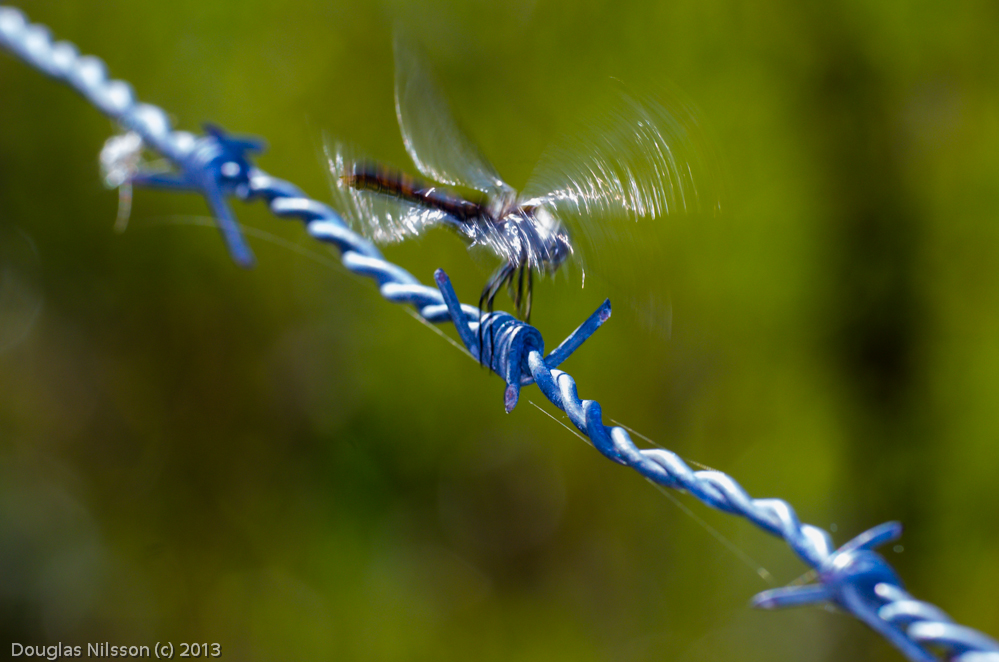


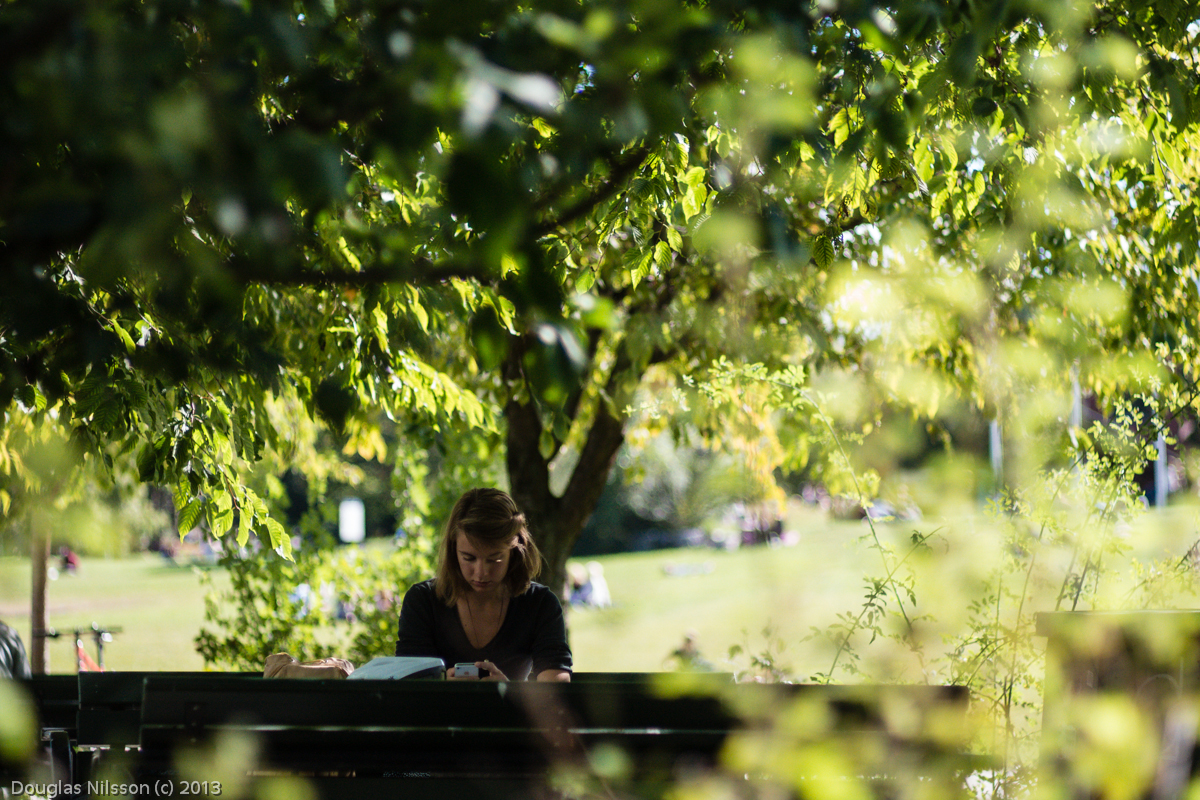
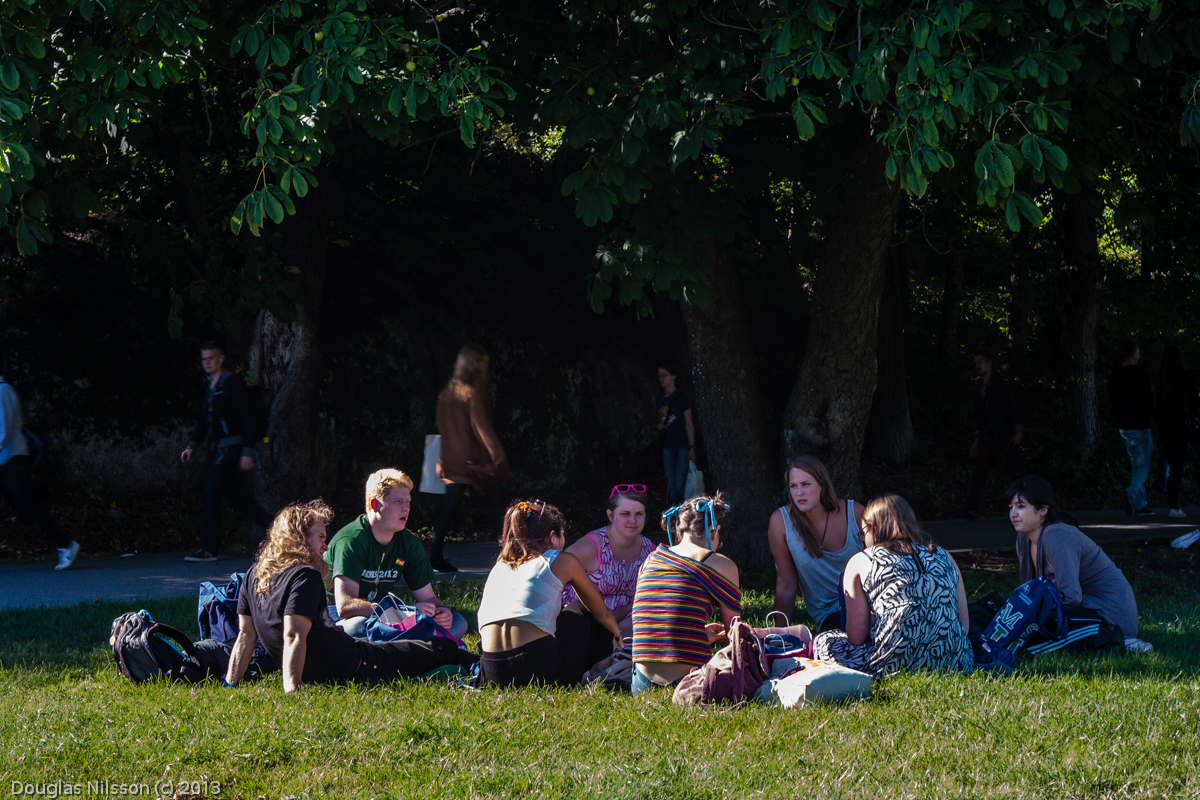


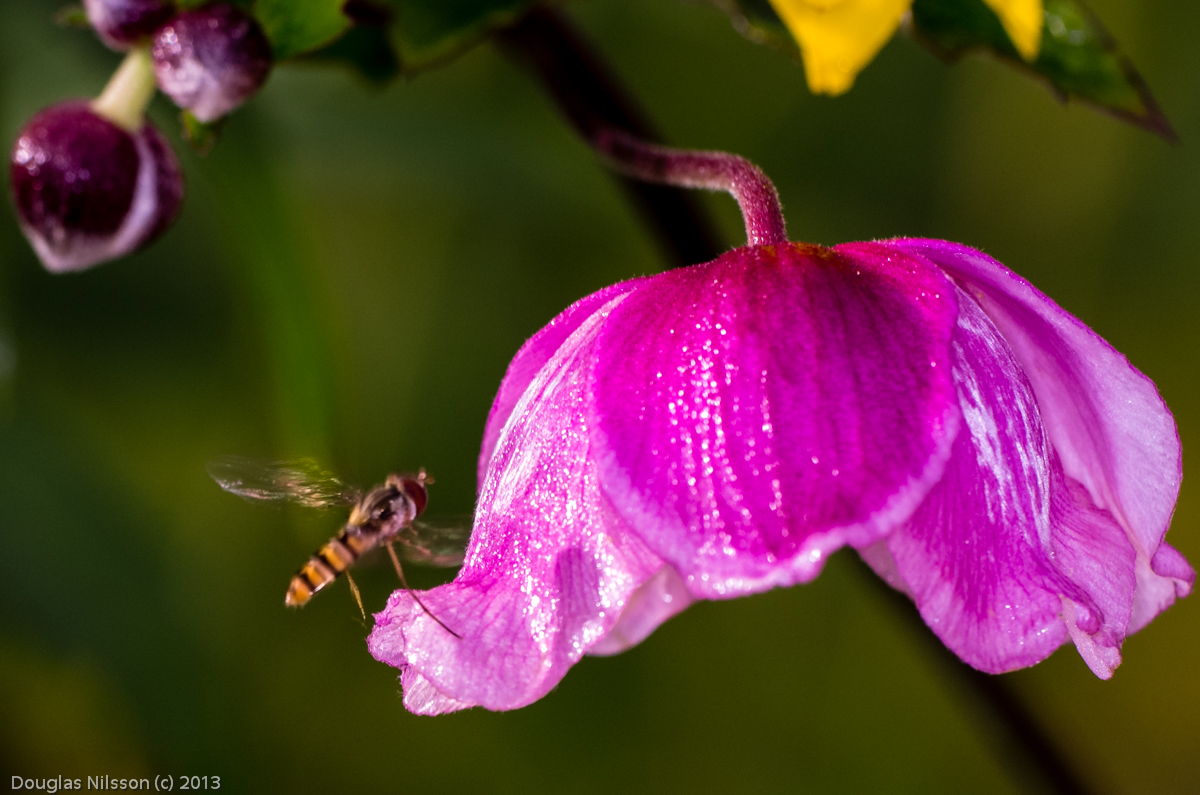

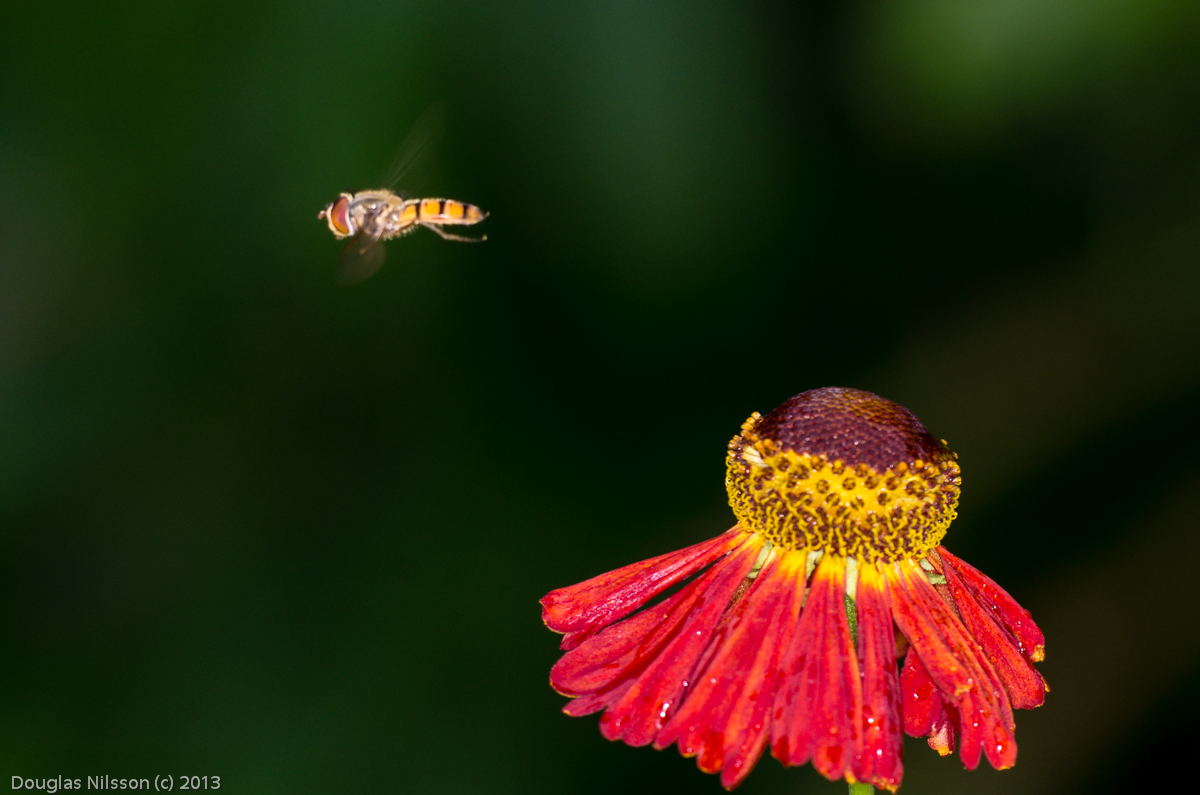
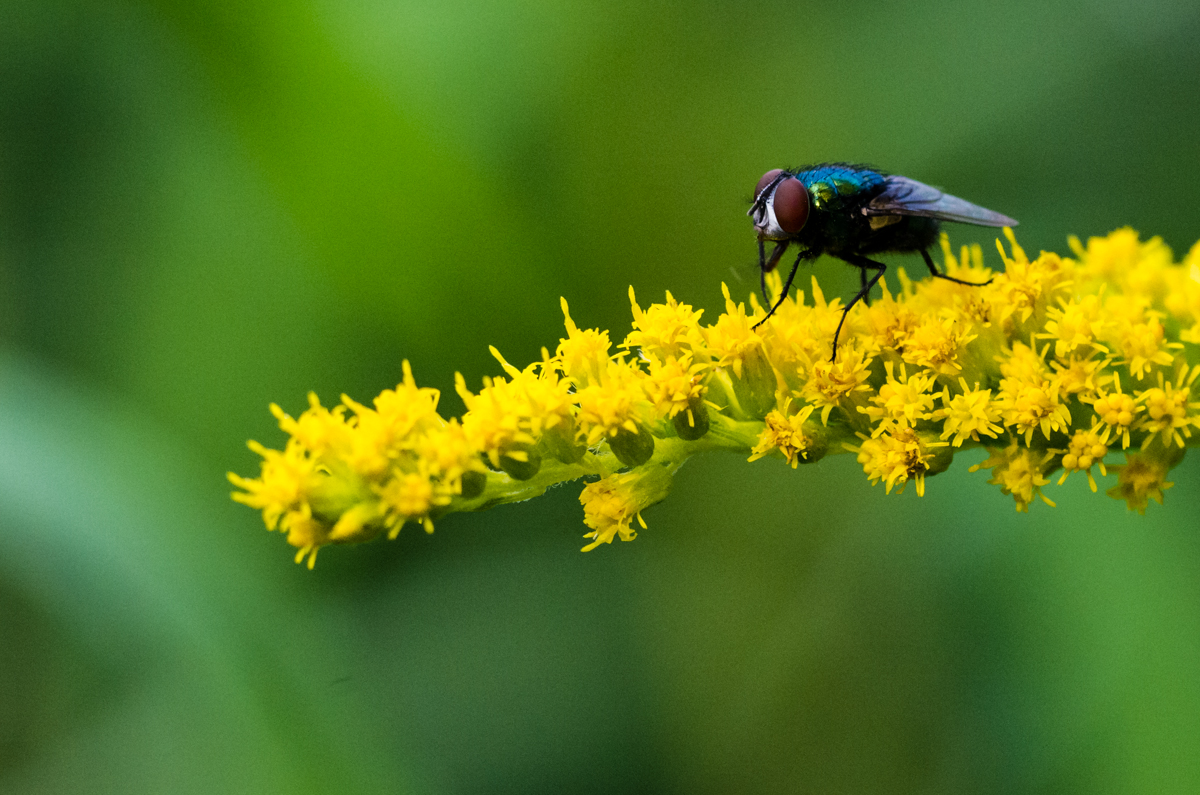
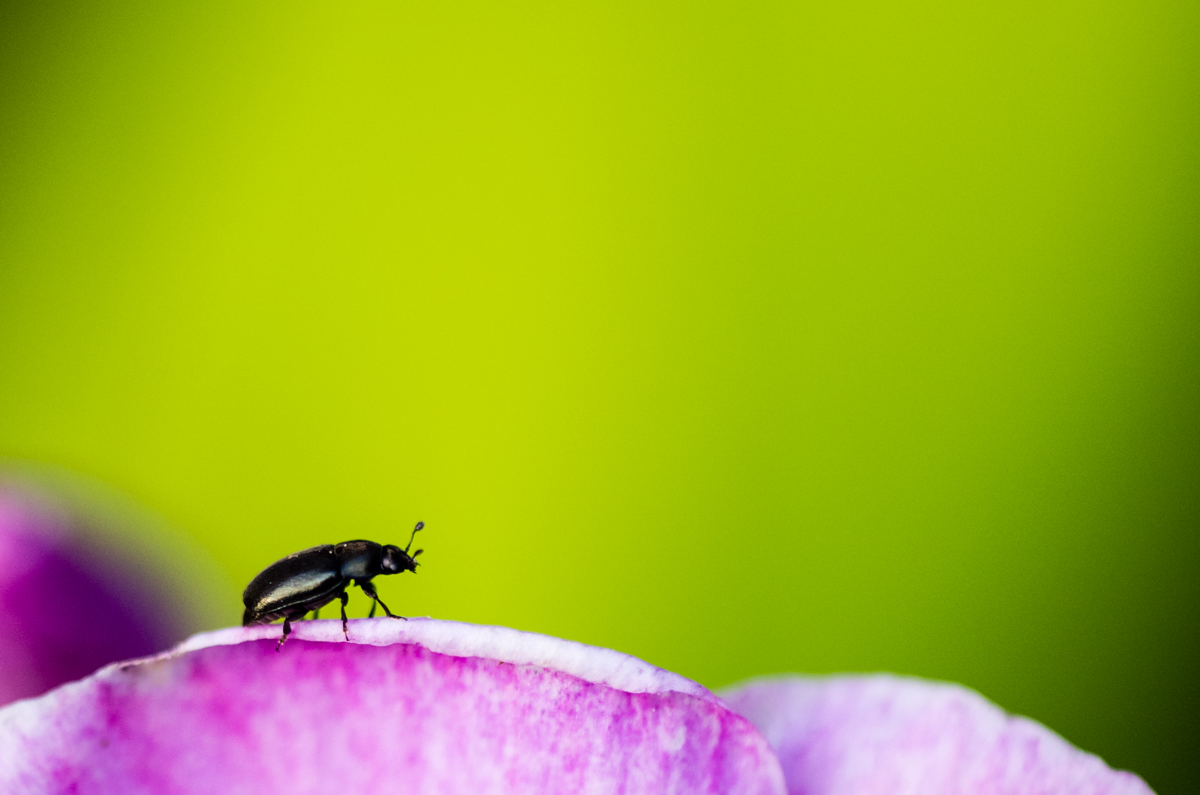
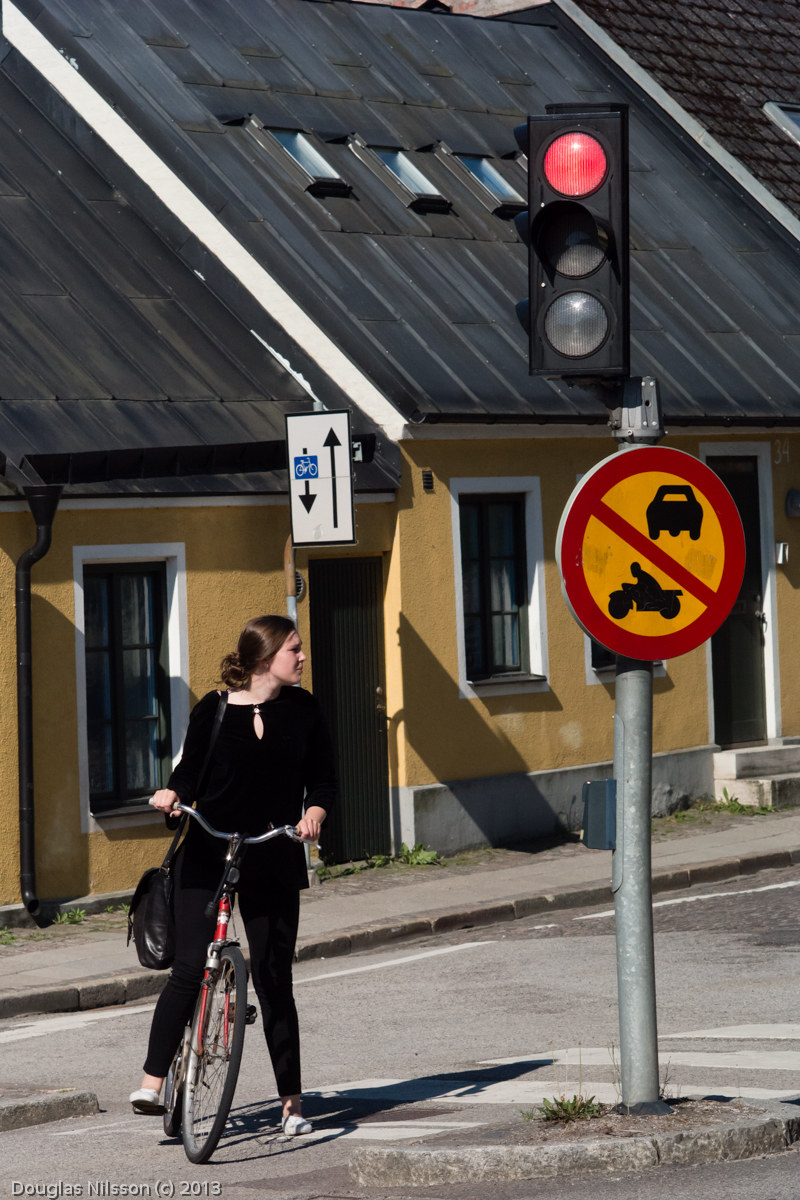



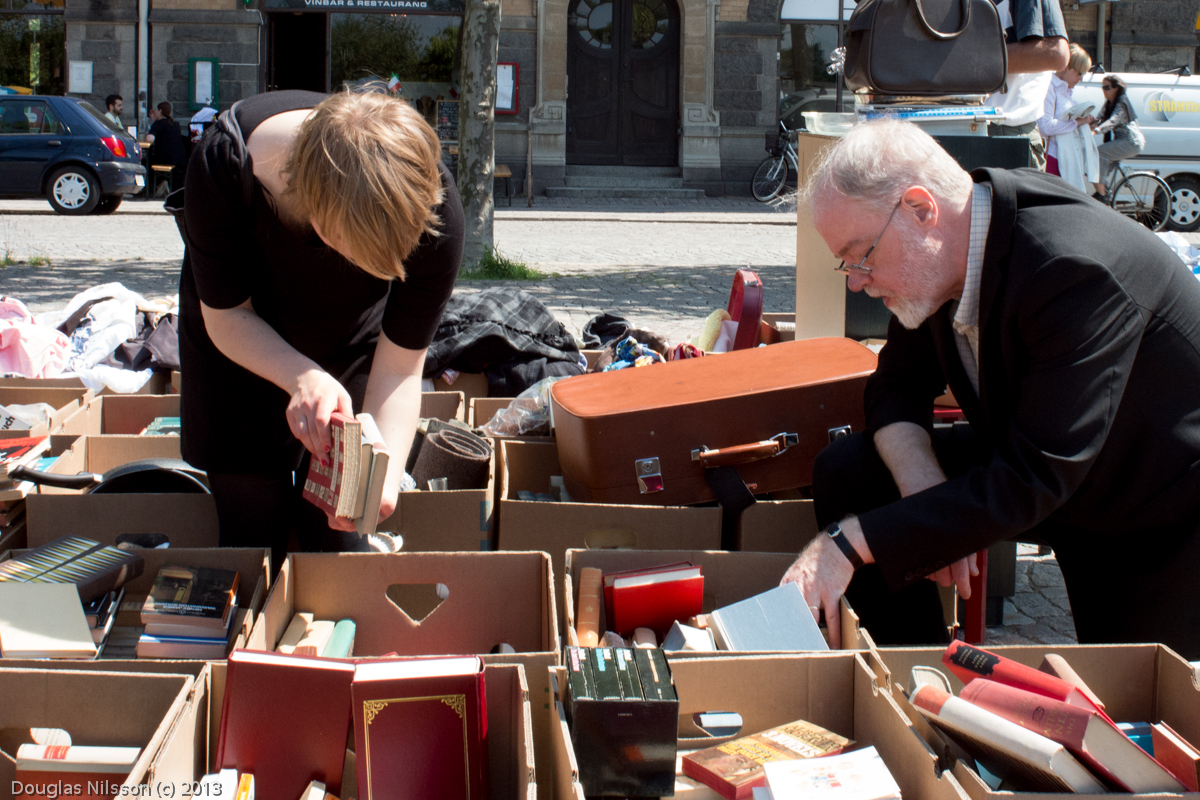
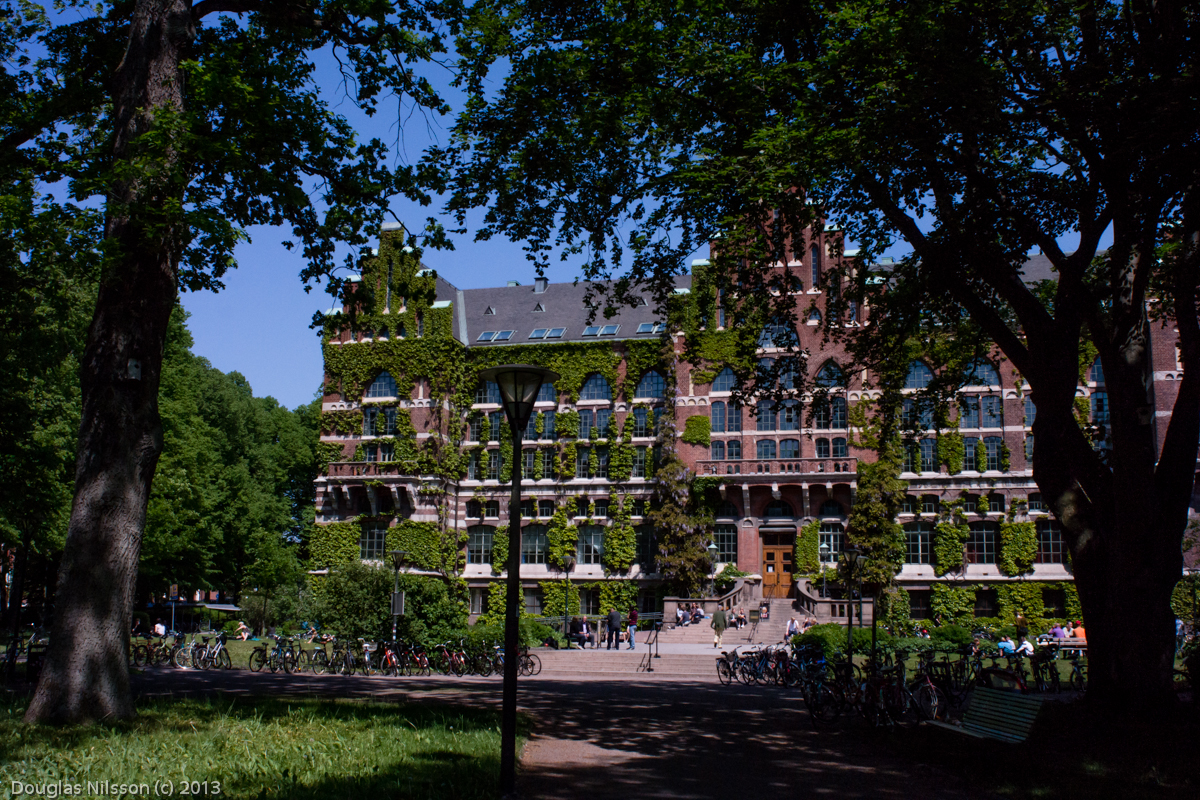


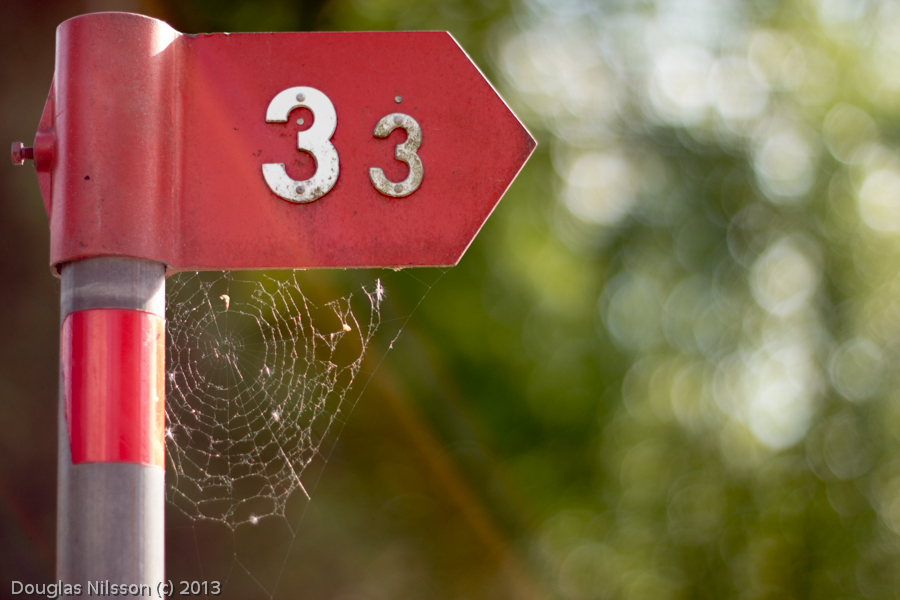
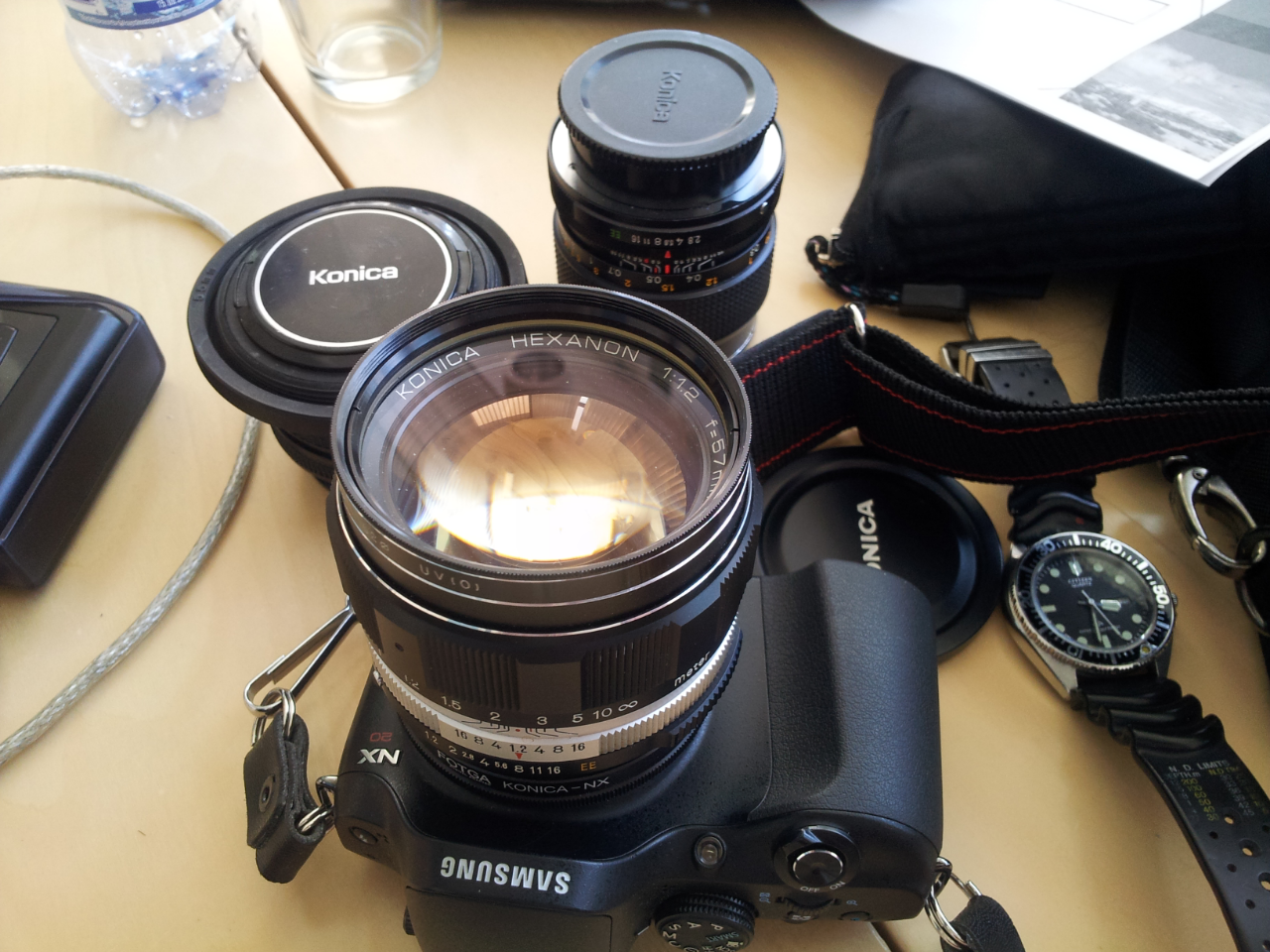





.jpg)







